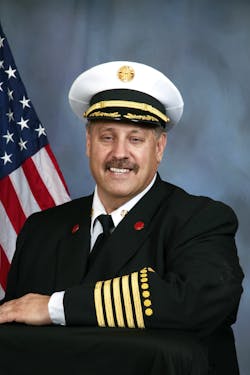Is Uber going to put us out of a job? I don’t think so! However, an October 2017 study conducted by economists at the University of Kansas showed a 7 percent drop in ambulance usage in 766 cities in 43 states where Uber operates. There is no evidence to support that the drop in ambulance usage is directly attributable to Uber, but it is interesting data to consider.
Understanding the data
Uber started as a ride-sharing service in San Francisco in 2009. After their success there, they started expanding into other cities in 2012. By May 2017, Uber had done 5 billion rides in 76 countries. Since 2012, other similar companies like Lyft have also come online.
Over the past few years, ride-sharing services have been the focus of many new studies, like that conducted by the University of Kansas researchers. Other studies attribute Uber for reducing drunk driving fatalities and citations, as people are more apt to call an Uber car instead of attempting to drive drunk.
For their study, the researchers at the University of Kansas used the data that you fill out daily on your patient care reports, which is sent to your state EMS office and then stored in the central repository called the National Emergency Medical Service Information System (NEMSIS) at the University of Utah. NEMSIS—the national database used to store EMS data from states and U.S. territories—is a universal standard for how patient care information resulting from an emergency 9-1-1 call for assistance is collected. Common data points that you capture (e.g., male or female, zip code, age, procedures done, medical equipment used) are collected and stored for research.
A critical choice
There is probably some validity to people using Uber instead of an ambulance to go to the emergency room. In a July 2016 article in PC Magazine titled, “Why I Used Uber Instead of an Ambulance,” the author said she was seriously ill and needed to go to the emergency room. She could not hail a cab and did not want to incur a large ambulance bill, so she called an Uber, which she could see on her app was three minutes away. Truth be told, if you consider the time to process the 9-1-1 call and dispatch it, the turnout time for the medic crew, and then the response time from wheels start to wheels stop, she probably got an Uber faster than calling 9-1-1. Actress Jaime King said on The Tonight Show that she elected to use an Uber car when she was in labor because, “I know they’re three minutes away and an ambulance you don't know.”
The times I have been out of town and riding in an Uber or Lyft, I’ve asked the driver if they have had rides with people who are having a medical emergency and wish to be taken to an emergency room. Every single driver confirmed that they have had at least one experience during their Uber/Lyft-driving career of transporting someone having a medical emergency. One driver shared a story of a man who had a broken leg basically crawling to his car.
My June 2017 Firehouse column included a discussion of the MedStar Mobile Healthcare system in Fort Worth, TX, using Lyft to transport low-acuity patients. Washington, D.C. Fire has also explored using Uber to transport low-acuity patients. Finally, some healthcare systems are using ride-share services to move patients back and forth for checkups and other low-risk procedures.
A new dynamic
To be clear, I am certainly not advocating that people call a ride-share service like Uber instead of dialing 9-1-1. There is certainly something to be said for someone who is having an acute emergency, receiving prehospital instructions over the phone, a response by a first responder and/or ambulance, and then receiving definitive emergency care prior to arriving at an emergency room. But there is no denying that ride-sharing services transporting patients has certainly added a new dynamic to emergency medical response, and bears watching and monitoring for successes or concerns.

Gary Ludwig
GARY LUDWIG has served in three fire departments over his career: St. Louis, Memphis, and Champaign, IL. His fire, EMS and rescue career spanned a total of 46 years, and he has been a paramedic for over 44 years. Ludwig served as president of the International Association of Fire Chiefs in 2019-20. He has a Master’s degree in Business and Management, has written over 500 articles for professional fire and EMS publications and is the author of seven books.
Connect with Gary
Email: [email protected]
Facebook: Gary Ludwig
Twitter: @ChiefGaryLudwig
Website: garyludwig.com






